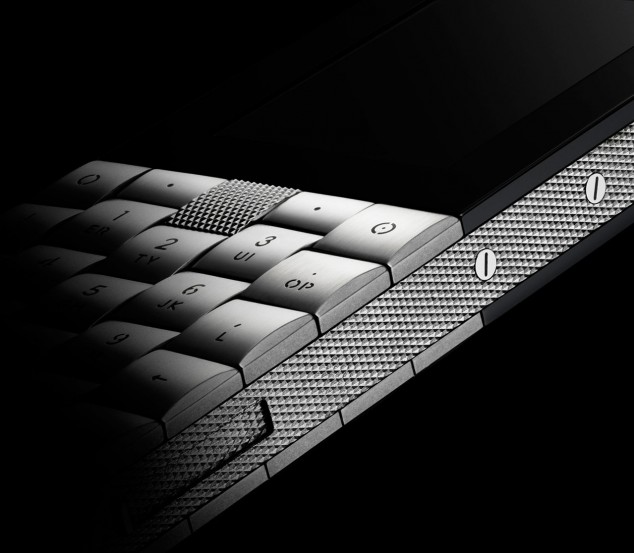Innovation 01: Edge-to-edge key design
The edge-to-edge keys are a visual and tactile feature of the phone, and a first in handset design.
Designers and engineers generally prefer to conceal key edges. This is because the keys can fall out of alignment with wear and tear, or can even fall off when a phone is pulled from a pocket.
On the Æ+Y, edge-to-edge alignment is achieved in two ways: by mounting the keys with a specially designed hinge mechanism, and securing them with 20 miniature screws of the type customarily used in complicated watch movements. The keypad is assembled with a bespoke robotic assembly method, and completed by hand-setting each of the keys to make them align perfectly.
Innovation 02: Wraparound ceramic
Æsir is the first handset manufacturer to produce two pieces of ceramic that wrap around the phone’s exterior and meet seamlessly.
Achieving this demanded a lateral approach to construction, because the ceramic specified by the design is thinner and stronger than that usually used in a mobile phone. The antenna was consequently repositioned, and optimised for maximum performance using an innovative construction method.
Innovation 03: Seamless lines
The lines where different parts and materials meet is a feature that is integral to the industrial design of the phone. These lines meet seamlessly and line up perfectly, for example, on the side of the phone.
To achieve this, the engineers and craftsmen worked to very precise tolerances on the wraparound ceramic. Achieving extreme precision with ceramic is difficult, as it can shrink by up to 30 percent during the sintering process when ceramic is transformed into a solid material. The tolerance level recommended by experts is 0.2 to 0.3mm, but the Æ+Y craftsmen achieved a level of 0.05mm for the top-end where the two pieces of ceramic meet and 0.03mm on the bezel where glass meets ceramic.
Achieving a flawless line and seamless gap where the ceramic meets the lens was made even more challenging because of the desired thinness of the phone. Æsir took inspiration from the watch industry and created a sapphire lens with a stepped ledge that would perfectly mount the ceramic front cover – a technique that had never been used before on a square-shaped lens, or on a lens the size of the Æ+Y.



